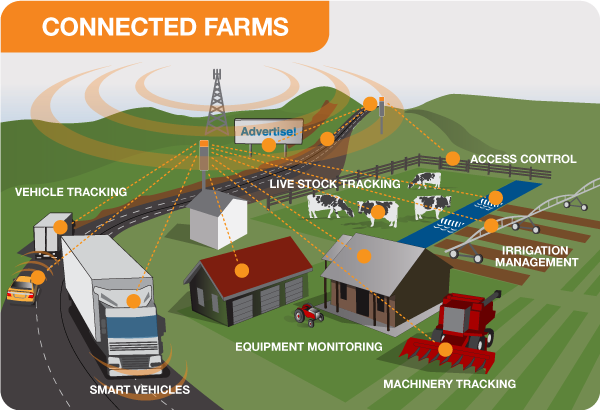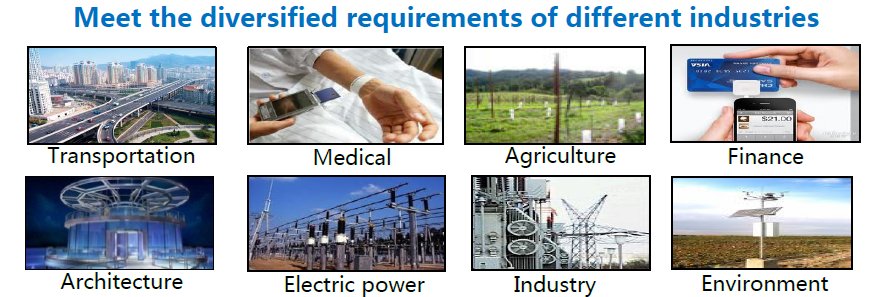There have been more questions and debates for the past 5 years about 5G networks. People have been wondering what is 5G? Others have been more interested in 5G smartphones. And of course, there is the debate about which mobile carrier will have the best 5G services.

Figure 1: The evolution of wireless networks
This article by Dr. Alcardo Alex Barakabitze from the Department of Mathematics, Computational Sciences and Informatics of Sokoine University of Agriculture will provide answers to questions you have. It tells you everything you need to know about 5G from a recent paper that has been published in the Computer Network Elsevier Journal (link: https://www.sciencedirect.com/science/article/pii/S1389128619304773)
The 2G network evolution in the 1990s made text messaging possible, while 3G leap subsequently supported data transmission including voice and video communications as illustrated in Figure 1. The 4G LTE platform built upon those capabilities, with improved bandwidth, speed and reliability. Today, new typical innovative scenarios and services such as self-driving cars, the “Internet of Things” (IoT), UHD video transmissions such as 4K/8K and virtual reality are driving the next paradigm shift towards 5G systems. 5G will provide the exponential improvement in bandwidth and latency reduction to power these advancements. 5G has to meet the diversified requirements of different industries such as transportation, agriculture, e-heath etc.
“The 5G needs to be robust enough, reliable and resilient network to support timely communications for emergency and public safety”.Dr. Barakabitze explains
The Future of Agriculture with 5G.
The global agriculture industry is responsible for meeting the requirement of growing 70% more food in the year 2050. To achieve this challenge, 5G speed and the industry automation must be at the forefront of their focus. The AgTech industry will have to help farmers and come up with efficient solutions for that in the upcoming 5G systems. The agricultural IoT -based devices will enable farmers in 5G networks to better measure things on a day-to-day basis. 5G will enable farmers to provide real-time data/crop communication in amazing ways and when used alongside agricultural practices, these new abilities to monitor, track and automate systems in lightning fast speed will give rise to smart-farming especially in the developing world. 5G-operated sensors for example will be able to communicate moisture, fertilization and nutrition levels.
Sensors will be also able to provide different reports on current and predicted weather patterns using Machine Learning (ML) and Artificial Intelligence (AI) methods to allow for improved crop management and livestock analysis in 5G networks. It is worth mentioning that, advanced devices in 5G technology will not only enable farmers to gather a lot of information but will also help them to perform more accurate forecasting such that farmers can respond quickly to changing crop conditions.
Dr.Barakabitze highlights that, it is the time now for developing countries to take the upcoming opportunities that 5G is offering in agriculture in order to increase productivity, efficiency and alleviate poverty.

Figure 2: Smart Farm in 5G systems
What are the requirements of 5G networks? Why are they important for Agriculture Sector?
Some of the requirements that have been identified by major standards and bodies such as the 3GPP and ITU-T, corresponding with the IMT-2020 performance targets include:
- Higher Data Rate: 5G will provide significantly faster data speeds. Peak data rates can hit 20Gbps downlink and 10Gbps uplink per mobile base station. This speed will be 10 times faster than the current 4G networks. 5G will be significantly faster than 4G, delivering up to 20 Gigabits-per-second peak data rates and 100+ Megabits-per-second average data rates. With this data rate, farmers will be able to receive information in a timely communication manner, raising awareness among themselves with regards to better agriculture crop markets available.
- Low Latency: 5G has significantly lower latency to deliver more instantaneous, real-time access: a 10x decrease in end-to-end latency down to 1ms.
- Massive Connection density: 5G should be able to support many more connected devices than 4G LTE networks. The standard states 5G should be able to support 1 million connected devices per square kilometre. That’s a huge number, which takes into account the slew of devices that will power the Internet of Things (IoT). Figure 1 shows a summary of 5G requirements from different verticals.
- Network Coverage: 5G will provide almost 100% consistent network coverage for ‘anytime, anywhere’ connectivity and enhanced service availability of almost 99.999%: Users on 5G network should get network coverage from any geographical locations. Fluctuations in the network performance, service disruptions, and unpredictable nature of wireless channels have to be kept at a minimal level for 5G to guarantee the required end-user’s Quality of Experience (QoE) provisioning.

Figure 3: Requirements of 5G networks
- Mobility Support: With 5G, base stations should support movement from 0 to 310 mph. This basically means the base station should work across a range of antenna movements — even on a high-speed train.
What can 5G do for other sectors?
5G is now making the transition from a general idea to network implementation. Network operators in different countries are already scheduling 5G network trials and testbeds to find ways and solutions on how the 5G vision can be realized in reality. 5G networks promise to support new services (4K/8K), and applications as well as cloud connectivity. There are three main case uses driving the 5G revolution:
- Enhanced mobile broadband: The shift towards 5G will undoubtedly change the way we interact with technology on a day-to-day basis, but it’s also an absolute necessity if we want to continue using mobile broadband. With the promise of 10 Gbps connectivity and latency of less than 5 milliseconds, it’s no surprise the ongoing surge in demand for mobile connectivity will accelerate dramatically. The industry estimates this increased speed will result in a 10- to 100-fold increase in the number of 5G-connected devices over the number of 4G devices.
- Public safety and infrastructure: 5G will allow smart cities and other municipalities to operate more efficiently. Utility companies will be able easily to track usage remotely, sensors can notify public works departments when drains flood or streetlights go out, and municipalities will be able to quickly and inexpensively install surveillance cameras.
- Enhanced Health care Support: The ultra-reliable low latency communications (URLLC) component of 5G could fundamentally change health care services are offered currently. Since URLLC reduces 5G latency even further than what you’ll see with enhanced mobile broadband, a world of new possibilities opens up. Expect to see improvements in telemedicine, remote recovery, and precision surgery, and even remote surgery in the coming years. Hospitals in the 5G era will be able to create massive sensor networks in order to monitor patients while physicians will be able to prescribe smart pills to track compliance. Insurers will be able to monitor subscribers so as to determine appropriate treatments and medical processes.
- Autonomous vehicles: Autonomous vehicles will rise in the coming years when 5G will be deployed. 5G will allow vehicles to communicate on the road. This will enable them to share and provide information to other cars about road conditions, and offer performance information to drivers and automakers. This kind of vehicle-to-vehicle communication could ultimately save thousands of lives.
- Remote device control: With lower latency in 5G systems, remote control of heavy machinery will become a reality. The main aim is to reduce risk in hazardous controlled environments and allow technicians with specialized technical skills to control remote machinery from anywhere in the world.
- The Internet of Things (IoT): Dr. Barakabitze emphasizes that there will be 20 billion IoT connections by 2020 which will drive smart buildings and smart cities. 5G network operators are anticipated to offer 1,000 times the bandwidth of 4G and up to five times the density. This will make a room for all those “things” or devices on the network to be connected together.

Figure 4: 5G user requirements for different IoT use cases




